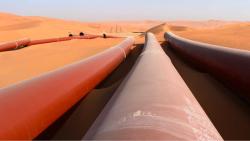
OR WAIT null SECS
© 2024 MJH Life Sciences™ and Turbomachinery Magazine. All rights reserved.
A new high in compression pressures
Kashagan reinjection compressor train[/caption]
Compression in Kashagan oil field in Kazakhstan has demonstrated among the highest pressures in commercial oil and gas production. Kashagan has recoverable oil reserves estimated at 9-13 billion barrels and is one of the world’s biggest discoveries in the last 40 years.
Production, originally due to begin in 2005, did not start until 2013 and then was halted shortly afterwards due to technical problems with gas pipelines. Production resumed in 2016.
The field is currently producing 200 kbpd and is set to ramp up to 370 kbpd by the end of the year. At the Turbomachinery Symosium this year, Mark Sandberg, a consultant, presented a paper, "A more comprehensive evaluation of equation of state influences on compressor performance determination," in which he discussed compression projects pushing the envelope.
He said that the severity of compression applications has continually evolved with increasingly higher discharge pressures and compositions of the handled gases. This is particularly the case with reinjection compression applications where discharge pressures have increased well into the dense phase region of the fluid phase envelope. The dense phase region is characterized by gas properties that reflect both gas and liquid properties. The Kashagan sour gas reinjection compressor train supplied by GE has been publicized as completing the highest pressure full load, full pressure factory acceptance test on record, with a discharge pressure during test reaching nearly 12,000 psig (820 barg).
Sandberg also mentioned that the publicized record of high density belongs to the reinjection machines for the Tupi III Project in Brazil. Although the discharge pressure attained during factory acceptance testing was below that of the Kashagan Project, the high carbon dioxide concentration of the gas resulted in a higher discharge density which was reportedly equivalent to that of a natural gas mixture at approximately 13,000 psig (900 barg). The Dresser-Rand Datum



